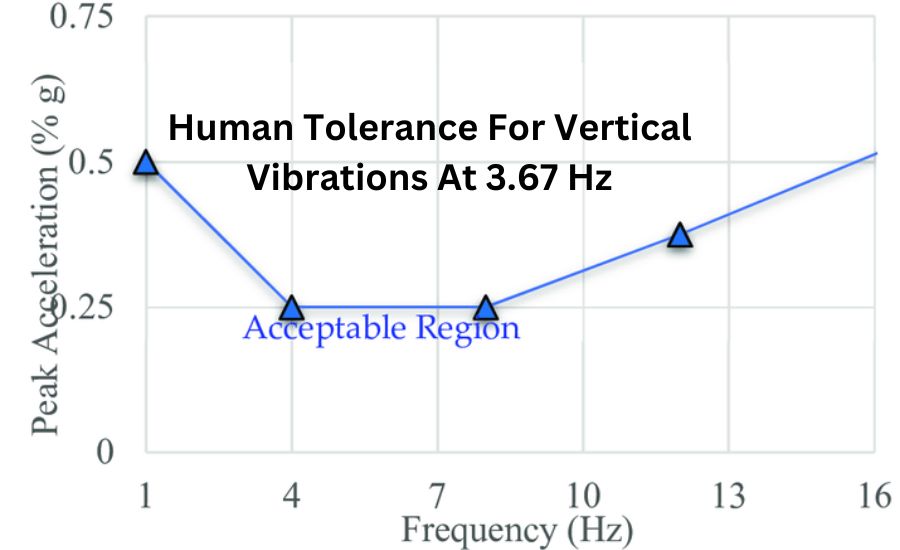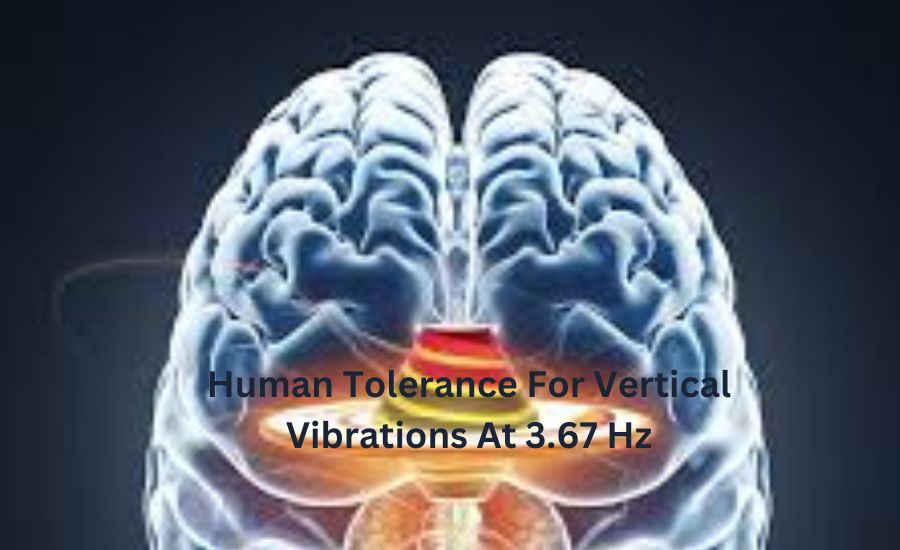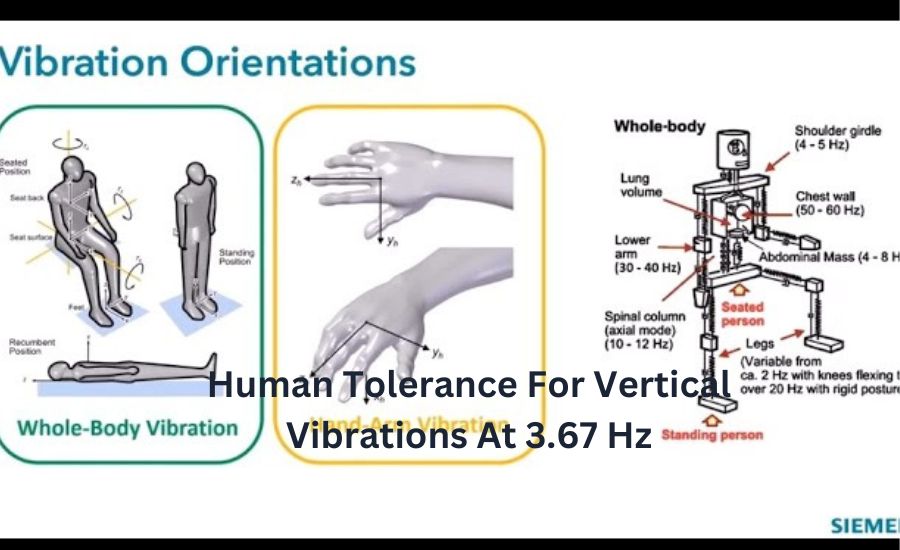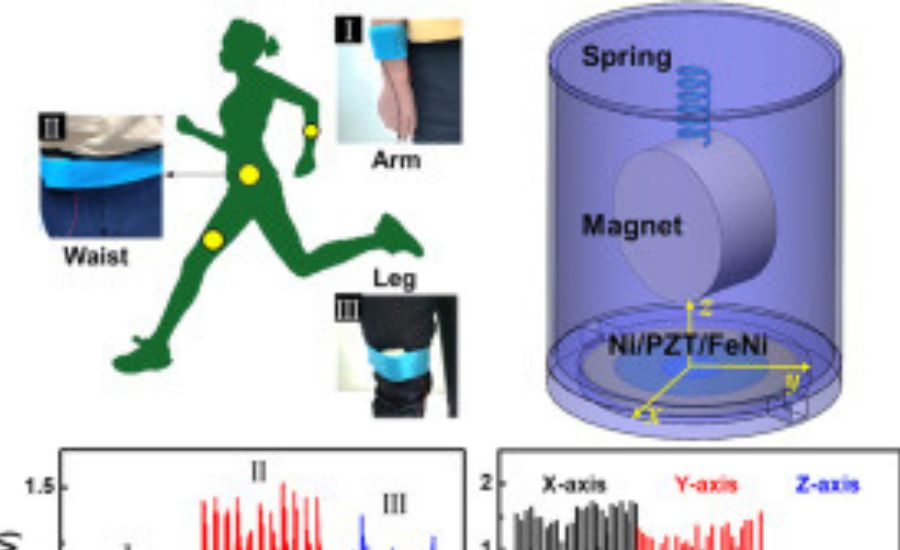Human tolerance for vertical vibrations at 3.67 Hz might sound complicated, but here at Vents Blogs, we’re here to break it down for you! From riding in cars to being in tall buildings, these vibrations can affect how we feel and even how comfortable we are in different situations.
When vibrations occur at 3.67 Hz, our bodies react in unique ways. Understanding how humans tolerate these vibrations helps engineers and designers create safer and more comfortable environments, whether in cars, airplanes, or at home. Let’s dive into what these vibrations are and how they affect us!
What Is Human Tolerance for Vertical Vibrations at 3.67 Hz?
Human tolerance for vertical vibrations at 3.67 Hz refers to how our bodies handle vibrations at this specific frequency. These vibrations can come from moving cars, trains, or even elevators in tall buildings. When exposed to these vibrations, our bodies may feel uncomfortable or uneasy.
At 3.67 Hz, the vibrations are noticeable but not always harmful. However, if they last too long, they can make us feel shaky or even dizzy. Understanding these vibrations helps engineers create better designs for transportation and buildings so that people feel safer and more comfortable.
By studying how humans react to vertical vibrations at 3.67 Hz, experts can find ways to minimize discomfort. This is important for people who spend much time in environments with familiar vibrations, like factory workers or frequent travelers.
Why Do Vertical Vibrations at 3.67 Hz Matter in Daily Life?

We may not think about it, but vibrations are everywhere. From driving over a bumpy road to walking across a shaky bridge, vertical vibrations at 3.67 Hz can affect our comfort. If the vibrations are strong, they can make simple tasks like sitting in a car or using an elevator less enjoyable.
In buildings, vertical vibrations at this frequency can cause discomfort for people, especially in high-rise offices or apartments. If the building sways slightly, it can lead to unease or even motion sickness. That’s why it’s important to consider human tolerance for vertical vibrations at 3.67 Hz when designing structures.
The goal is to reduce these vibrations so people don’t feel uncomfortable. Engineers work hard to keep buildings and vehicles steady, ensuring a smoother experience for everyone.
How Human Bodies React to Vertical Vibrations at 3.67 Hz
When exposed to vertical vibrations at 3.67 Hz, the human body reacts in different ways depending on the person and the strength of the vibration. Some people may slightly shake, while others may experience more discomfort, like nausea or dizziness.
These vibrations can make everyday tasks harder if they’re too strong or last too long. For example, sitting on a bus or a train with too many vibrations can make the ride uncomfortable. Human tolerance for vertical vibrations at 3.67 Hz is essential, especially where vibrations happen often.
Over time, constant exposure to vibrations at this frequency can also cause fatigue. This is why designers and engineers must limit the amount of vibration people feel in their environments.
What Causes Vertical Vibrations at 3.67 Hz in Buildings and Vehicles?
Vertical vibrations at 3.67 Hz can come from many different sources. In vehicles, rough roads or uneven surfaces can cause vibrations. Wind, machinery, or even nearby construction can make the building vibrate at this frequency.
Vehicles like buses and trains may vibrate at 3.67 Hz when they move over bumps or rough terrain. This is why passengers sometimes feel a slight shaking or discomfort during their ride. Similarly, strong winds or large machinery like elevators in tall buildings can cause vertical vibrations.
Engineers can reduce vibrations by understanding what causes them. Reducing vibrations means people will feel more comfortable and safer, whether traveling in a vehicle or working in a tall office building.
Can Vertical Vibrations at 3.67 Hz Affect Your Health?
While vertical vibrations at 3.67 Hz aren’t always harmful, they can affect your health if you experience them for long periods. Constant exposure to vibrations can cause fatigue and discomfort. Some people may also feel dizzy or experience motion sickness.
In some cases, if the vibrations are strong enough, they can make it difficult for people to focus or relax. This is especially true in places like offices or homes where people expect a calm environment. Human tolerance for vertical vibrations at 3.67 Hz is essential because it helps us understand what vibration levels are safe for people.
Minimizing vibrations can create healthier spaces where people can work and live comfortably. That’s why it’s crucial for building designs and transportation to consider vibration levels to ensure they stay within safe limits.
Understanding Human Tolerance to Vertical Vibrations at 3.67 Hz in Transport

Transport systems like buses, trains, and airplanes often produce vertical vibrations at 3.67 Hz, especially on uneven or rough roads. These vibrations can make the ride less comfortable for passengers. People might feel their bodies shaking or swaying, leading to discomfort or motion sickness.
Engineers consider human tolerance for vertical vibrations at 3.67 Hz when designing vehicles. They aim to reduce the level of vibration to make travel more comfortable. When vibrations are too strong or too frequent, trips can be tiring or unpleasant.
By studying how our bodies react to vibrations, experts can design better, smoother transport systems. This will help create a more enjoyable travel experience for everyone, whether they’re riding in a car, train, or airplane.
Ways to Reduce Vertical Vibrations at 3.67 Hz in Everyday Environments
In everyday environments, there are several ways to reduce vertical vibrations at 3.67 Hz. One effective method is to use shock-absorbing materials in buildings and vehicles. These materials can help dampen vibrations, making spaces more comfortable for everyone.
Another way to minimize vibrations is through careful design. Engineers can create structures that are more stable and can better withstand vibrations. This includes using more robust materials and better construction techniques to ensure buildings sway less.
Maintaining smooth roads and using good suspension systems can also help reduce vibrations in vehicles. Regular maintenance of cars and buses ensures they operate smoothly, which helps keep passengers comfortable during their journeys.
Why Engineers Care About Human Tolerance for Vertical Vibrations at 3.67 Hz
Engineers pay close attention to human tolerance for vertical vibrations at 3.67 Hz because it affects safety and comfort. If vibrations are too strong, they can lead to discomfort or even health issues for passengers and workers.
Engineers can design safer vehicles and buildings by understanding how vibrations impact people. They aim to create environments where people feel secure and relaxed, which is especially important in places like hospitals and schools.
Moreover, engineers conduct tests to measure how much vibration is safe for different environments. This helps them make informed decisions when designing new structures or vehicles that everyone will use.
Simple Examples of Vertical Vibrations at 3.67 Hz in Your Daily Routine
We experience vertical vibrations at 3.67 Hz in many simple daily activities. For example, riding a bus over a bumpy road can create these vibrations. You might notice how your body shakes slightly during the ride.
Another typical example is being in an elevator. As it moves up and down, you may feel some vibrations. If the elevator has poor suspension, these vibrations can make you uneasy.
Walking on a shaky bridge can also lead to a feeling of vertical vibrations at this frequency. While it might feel thrilling, too much movement can be unsettling for some people, showing how important it is to manage vibrations in our daily lives.
The Role of Human Tolerance in Building Designs for 3.67 Hz Vibrations

When designing buildings, architects must consider human tolerance for vertical vibrations at 3.67 Hz. This is especially important for tall buildings that might sway in the wind. If they do not account for these vibrations, they could make people feel uncomfortable or unsafe.
Designers often use special engineering techniques to ensure that buildings can handle vibrations. This might include using flexible materials or designing the building shape to reduce movement.
By planning ahead and incorporating these considerations, architects create beautiful and safe spaces. This means people can work and live comfortably without worrying about unwanted vibrations.
Do You Know: Proatese-Your-New-Secret-For-Better-Health-2024
How to Improve Human Tolerance for Vertical Vibrations at 3.67 Hz
Improving human tolerance for vertical vibrations at 3.67 Hz involves creating better environments and reducing exposure to solid vibrations. One way to do this is through better education. Teaching people how vibrations affect their bodies can help them manage their reactions.
Additionally, providing spaces designed for comfort can make a difference. Quiet rooms or areas with good sound and vibration insulation can help people feel at ease. This is especially important in places people need to focus, like offices or classrooms.
Finally, allowing breaks during activities that involve vibrations can help people recover. For instance, giving passengers time to stretch during long car or bus rides can make the experience more pleasant.
Conclusion
In conclusion, understanding human tolerance for vertical vibrations at 3.67 Hz is essential for everyone. These vibrations can happen everywhere, like cars, buildings, and buses. Knowing how these vibrations affect us, we can make better designs that keep people safe and comfortable. Engineers and designers work hard to create spaces where we feel good, even when vibrations surround us.
Remember, it’s not just about the big things. Small changes, like using better materials or smoother roads, can significantly affect our feelings. By reducing uncomfortable vibrations, we can enjoy our daily activities without worry. So, next time you ride in a car or take an elevator, think about how these vibrations affect your comfort!
Latest Blog: Download-App-Nordvpn-6-45-10-3-Offline-Installer
FAQS
Q: What are vertical vibrations at 3.67 Hz?
A: Vertical vibrations at 3.67 Hz occur in an up-and-down motion at this specific frequency. They can happen in vehicles, buildings, and other structures and are felt by people in those environments.
Q: How do these vibrations affect people?
A: These vibrations can cause discomfort, unease, or even motion sickness in some people. The effects can vary based on how long and intense the vibrations are.
Q: Why is it important to study human tolerance for these vibrations?
A: Studying human tolerance helps engineers and designers create safer and more comfortable environments. Understanding how people react to vibrations can lead to better building designs and transportation systems.
Q: Where do we commonly experience vibrations at 3.67 Hz?
A: Common places include vehicles like cars and buses, tall buildings during windy conditions, and elevators. Each of these settings can produce noticeable vertical vibrations.
Q: Can vertical vibrations cause health problems?
A: While short exposure is usually safe, long-term exposure to solid vibrations can lead to discomfort, fatigue, or even health issues. It’s essential to minimize these vibrations in living and working spaces.
Q: How can vibrations be reduced in buildings and vehicles?
A: Engineers can use shock-absorbing materials, improve building designs, and maintain vehicles to minimize vibrations. These methods help create more stable and comfortable environments.
Q: What can individuals do to cope with vibrations?
A: Individuals can take breaks during long rides, choose comfortable seating, and use noise-canceling headphones. Learning about vibrations can also help them manage their reactions better.
